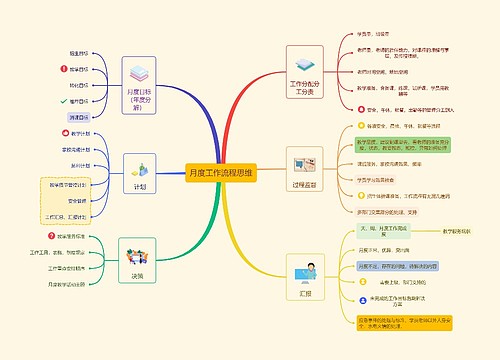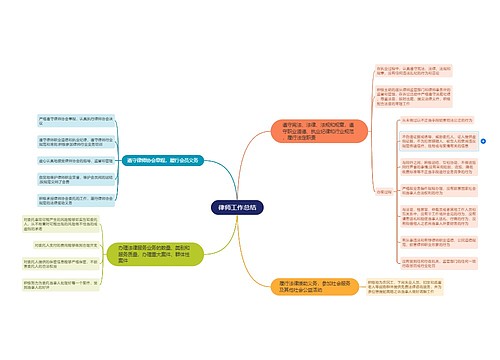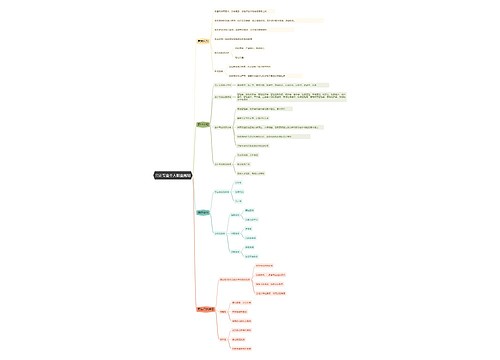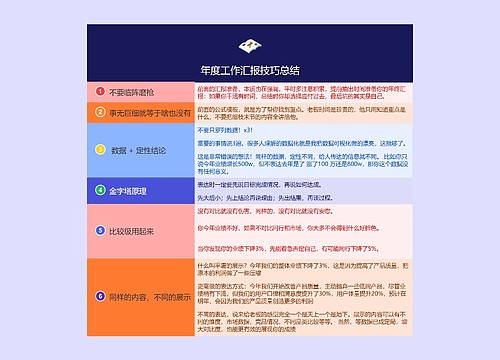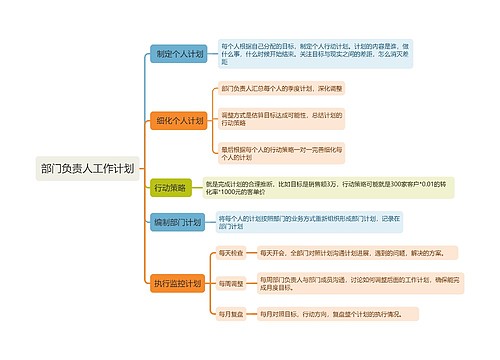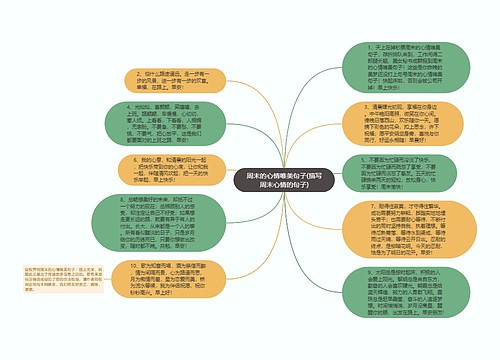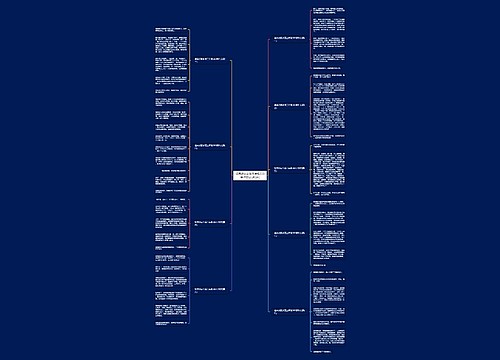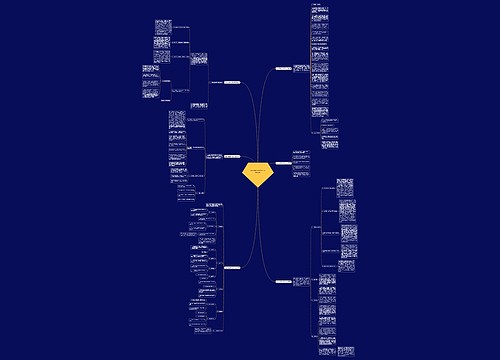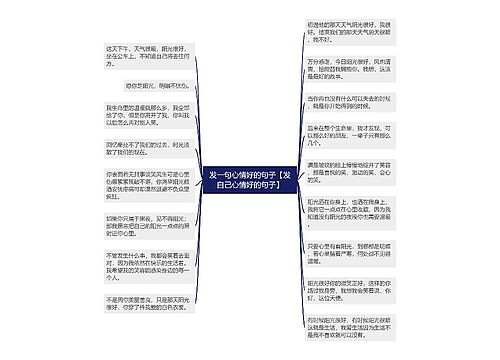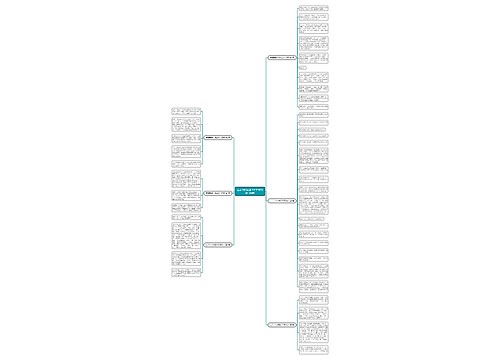
汉服文化介绍英文作文范文9篇思维导图
拾人心
2023-05-09

汉服文化介绍英文作文范文9篇
汉服文化介绍英文作文范文 第一篇因为汉服文化节,我们再一次来到千年古镇——西塘。在汉服节的开幕仪式上,妈妈又遇到了徐娇。看过《长江七号》的人一定知道,电影的主人公小狄就是徐娇扮演的。小时候,我和妹妹一直以为小狄是男生,没想到是女生扮演的。这几天的西塘古镇和往日不同,大街上都是穿着汉服的游客。
树图思维导图提供《汉服文化介绍英文作文范文9篇》在线思维导图免费制作,点击“编辑”按钮,可对《汉服文化介绍英文作文范文9篇》进行在线思维导图编辑,本思维导图属于思维导图模板主题,文件编号是:c283b18e612771265718eda86afc4aab
思维导图大纲
相关思维导图模版
汉服文化介绍英文作文范文9篇思维导图模板大纲
汉服文化介绍英文作文范文 第一篇
因为汉服文化节,我们再一次来到千年古镇——西塘。在汉服节的开幕仪式上,妈妈又遇到了徐娇。看过《长江七号》的人一定知道,电影的主人公小狄就是徐娇扮演的。小时候,我和妹妹一直以为小狄是男生,没想到是女生扮演的。
这几天的西塘古镇和往日不同,大街上都是穿着汉服的游客。当然,我和妹妹也早早准备了参加节日的服装。我的汉服上有很多刺绣,小鱼儿、花朵,还有飘逸的纱布;我的裙子很长,还是双层的,可漂亮了。妹妹的汉服上有白云和一条可爱的小锦鲤。走在路上,迎面而来的.游客都夸我和妹妹可爱呢。
这是我第三次来西塘,清澈的河水,古老的建筑,来往的游客,还有可爱的猫猫狗狗都让我记忆深刻。不过我最喜欢的还是西塘的特色早餐——馄饨、汤包、圆子……
汉服文化介绍英文作文范文 第二篇
很喜欢带有"初"的词语,总觉得它包含着纯洁和丰盈,从一眼凝眸的初见像窗外的清风,每一个字眼里都含有温情,每一个韵脚都带有美,那么我最钟意的是初心这个词,就像冬天的第一场雪,经过了山峦,跨过了小河,不问出处也不问最后的归途,遇见最初的自己,正如我对待汉服那般,始终如一,不忘初心。
情不知所以,一往情深,或许我对汉服就是这样。记得最近火起来的一句话"现在喜欢汉服的一定有当年把床单披在身上的那些人吧。"是啊,当年我也是在家里把床单披在身上化身为唐代的仕女,袅袅婷婷,而现在我也穿上了汉服。都说,人这一辈子一定要奋不顾身的做一件自己喜欢的事,那么对我而言就是汉服吧,始于颜值忠于内涵,我想这也正是它的魅力所在吧。华夏有衣,其名汉服。
人生有多少个第一次,第一次和喜欢的人旅行,第一次在街上和素昧平生的路人微笑打招呼,第一次被街拍的摄影邀请当模特等等,而这些所有的第一次都汉服陪着我经历的。忘记了是什么时候我放弃了他人口中的"好",选择了做我自己,但是我始终记得我是什么时候开始爱上汉服的。想用一些美丽的句子,华丽的辞藻去形容我对汉服热爱,但是却发现没有什么可以用来描述这份情感,只能用自己最平淡的话写出我对它的热爱。
我始终记得对待汉服的那份初心,不忘初心,方得始终。
汉服文化介绍英文作文范文 第三篇
汉服是我的挚爱,整个衣柜装满汉服是我毕生的梦想。
但是,实现梦想的路途中总会有万般艰难险阻,立场不同,就连身边最为亲近的人都会成为一颗绊脚石。
我尊敬的母上大人反对买汉服,觉得汉服又贵,买了也没多大机会穿。我以为汉服是我们民族的传统服装,应该发扬起来。我们之间有了冲突。但无论如何也不能阻止我的动作,阻挡我实现梦想。
还未独立的我根本没有经济来源,为了不让母上大人发现我在搞事情,只能在上学日省吃俭用。
中餐8元钱,平均每天吃2元钱,剩下6元钱存着买汉服。日积月累,一个月下来,就存了120元多,一个学期,就有600元了。
虽然我不知道这个办法可以用多久。
在同袍的帮助下,我终于获得了人生中的第一套汉服。抱着一个大大的快递盒,是从未有过的愉悦。
母上大人不在家,真是天助我也!
我迫不及待地开箱。
这套汉服是红黑渐变,裙摆有彼岸花的刺绣,十分的妖艳,花瓣如血,娇艳欲滴。
大袖衫与齐胸襦裙相互映衬。
上身试穿,看着全身镜中的自己,我简直不敢相信,这妖冶的女子,真的是我吗?啊!我从未见过这样的自己!这套汉服真美!
毫不犹豫,马上拿拍立得拍了几张照片。
在母上大人回家之前,我依依不舍地脱下了汉服。
大袖衫和齐胸襦裙被我小心翼翼地放在书柜里,送的明信片和眉心贴被珍藏在礼盒中。工作简直天衣无缝,不露一丝马脚,为的就是不被母上大人把我的梦想扼杀在摇篮里。
故技重施,我慢慢拥有了更多的汉服。
悄咪咪地穿出去,不管路人奇异的目光,和小姐姐一起蹦哒。坐在具有古典韵味的长亭里,仰头潇洒地喝着小酒壶中的……米酒。
在天地之间,不受任何人,任何规则的束缚,真好!
一套汉服,一壶酒,就是一个故事,一段历史。每个为汉服而奋斗的人,都有一个精彩的故事。
活在乱世,只因有你,安抚了我的心灵。
汉服文化介绍英文作文范文 第四篇
In order to improve the future development plan of the Royal E-sports club and promote the sustainable development of the League of heroes, we have decided to launch a new selection scheme for the League of heroes. The requirements are as follows: gender, male, level below the age, national costume king or Hanfu spending more than one person to study, with the consent of immediate family members or guardians, adapting to collective life, having team consciousness, having professional or semi professional experience The place of experience is the first choice in Shanghai.
中文翻译:
为了完善皇家电子竞技俱乐部未来的发展规划,促进英雄联盟的可持续发展,我们决定启动新的英雄联盟赛区选拔方案要求:性别男性,年龄以下游戏水平,国服王或汉服花费一人以上钻研直系亲属或监护人同意,适应集体生活,具有团队意识,有职业或半职业经验的游戏场所是上海的首选。
汉服文化介绍英文作文范文 第五篇
Bicycle is very popular in China for the reason that it never knows what it is made of. It is made by the son of Miss Hen. It is not because, but more importantly, it is made by the son of Miss Hen http://gaokokoolearncom/.
中文翻译:
自行车在中国很受欢迎,原因很简单,因为它总是不知道它是什么做的,它是由母鸡的儿子做的,它不是因为,而且更重要的是http://gaokokoolearncom/。
汉服文化介绍英文作文范文 第六篇
Every year during the Double Ninth Festival, Chinese citizens celebrate the elderly in their families and communities. This is a special tradition rooted in the deep value of Chinese culture for respecting the elderly. Anything we give is more valuable or appreciated than our time, and you may feel that you don't have enough time to take care of your many people's responsibilities.
It may be possible to take a little time on your way home from school to sit with a senior student who lives in your community for only five minutes, which will not hinder you from completing your homework, but for an old man, this It can turn a lonely day into a happy one. You live far away from your grandparents. Why don't you pick up the phone and tell them you're thinking about them, or you can remind them of the good old days and send them a text message.
Imagine their surprise and joy. We live in a complex and busy world, but kindness and care are still very Single thing.
中文翻译:
每年重阳节期间,中国公民在他们的家庭和社区里庆祝老人这是一个特殊的传统,根植于中国文化对敬老的深厚价值。我们所给予的任何东西都比我们的时间更宝贵或更受赞赏,而你可能会觉得没有足够的时间来照顾你的许多人责任,也许有可能在你放学回家的路上抽出一点时间和一位住在你社区的高年级学生坐在一起,只要5分钟不会妨碍你完成作业,但是对于一个老人来说,这可能会把孤独的一天完全变成快乐的一天你住的地方离你的祖父母很远为什么不拿起告诉他们你在想他们,或者你可以提醒他们过去的美好时光,给他们发一封短信想象一下他们的惊喜和喜悦我们生活在一个复杂而繁忙的世界,但是仁慈和关心仍然是一件很简单的事情。
汉服文化介绍英文作文范文 第七篇
扶摇而上,重回汉唐。华夏的风暖,吹开那段蒙尘的时光,隔着陌上风花,执浅墨,携风雅,为那一缕衣裳幽香,低吟浅唱。
春风拂槛,青衫花影
古老而神秘的华夏沃土之上,汉族,一朵静默之花绽放。那是一个内敛的民族,却是历史画卷中,最浓墨重彩的一笔。
"青青子衿,悠悠我心。但为君故,沉吟至今。"子衿,你的衣领。沉吟,我的悲鸣。汉服,是绝美的诗篇。汉的大气,晋的飘逸,唐的开放,宋的端庄,无论哪一种,都好。弱冠书生,温润如玉,豆蔻少女,美目盼兮。
汉服,汉家儿女的华美衣衫,却有着一段沉重的历史。还记得那年,清兵入关之时,留辫易服,汉人着的是谓旗装。而那次辛亥革命,剪辫易服,汉人着的是谓旗袍。那件结合了满族与西方文化的衣服,却承受不起五千年积淀的中华气度。21世纪的今天,汉家儿女的传统服饰,我们该何处追寻?
云想衣裳,礼仪之邦
《汉书》载:后数来朝贺,乐汉衣服制度。汉服,即汉民族传统服饰。在漫长的历史中,汉服逐渐成为汉人自我认同的文化象征,而汉服文化博大精深,其中典型的便是深衣制。何为深衣?《礼记·深衣》孔子正义曰:所以称深衣者,以余服则上衣下裳不相连,此深衣衣裳相连,被体深邃,故谓之深衣。
深衣是最能体现华夏文化精神的服饰,深衣象征天人合一,恢宏大度,公平正直,包容万物的东方美德,着深衣而居,天道之圆融,怀抱地道之方正,身合人间之正道,行动进退合权衡规矩,生活起居顺应四时之序。
除深衣外,最著名的便是上衣下裳制。如:齐胸襦裙,袄裙,交领或直襟襦裙等。
"上溯炎黄,下至宋明,以汉族人民所穿着的服饰为基础,并在此基础上发展演变而成的一种明显而具有独特风格的一系列服饰集合。"如此界定汉服,即汉民族传统服饰。
越罗衫袂,华夏有衣
岁月经年,汉服的身影早已被众多汉家儿女忘却,那些自豪地称自己是华夏族儿女的人,却可笑的只是识和服与韩服,而汉服却被视为奇装异服。在诸多舆论压力中,有人提出要复兴汉服文化,却被一些愚昧无知的中国人批判为大汉族主义,文化复古主义。
殊不知,文化在综合国力的竞争中,早已占据一席之地。汉服要的是复兴,为的是日益显示出中华民族的强大凝聚力。
而如今,诞生了一个新型名词"现代汉服"。而这也正是中华文化生命力的集中体现。
中国有服章之美谓之华,有礼仪之大故称夏。独华言之缺,谓夏言之残,礼仪之邦,始称华夏。汉服承载着中华千年历史,也应在时光的长河中生生不息。
越罗衫袂迎春风,玉刻麒麟腰带红。被罗衣之璀璨,珥瑶碧之华裾。
汉服文化介绍英文作文范文 第八篇
Xuanduan is a dress made to order in Zhou Dynasty. It is dark black and has wide sleeves. It is only used in large-scale activities, such as sacrificial opera Costume: one piece fashion dress with one or several rings around the body, forming a unique style.
During the Warring States period, it was cost-effective as a market dress, while in the Han Dynasty, it was regarded as a formal dress. Because some of its narrow lapels did not spread to later generations, it was often mistaken for the kimono Shenyi (long skirt): in the Warring States period, the clothing was worn by both men and women (different from the popular upper and lower garments, which were composed of cloth pieces), which symbolized that there were several months in a year, and there was no fashion at that time It was passed down, but it was made into men's formal straight dress (straight dress) in the Ming Dynasty: through cutting men's clothes, fastening them with a belt or corset collar, and using a piece of cloth to form a lower garment, in the Ming Dynasty, it was usually made into a men's dress of togaz clergy, which was cut and made into a style of pendulum skirt with dark knees: Women's dress, such as a Katy Sark, while a group was a skirt Half sleeve women's upper garment, with sleeves similar to the current short sleeve open-ended skirt of Tang Dynasty style, similar to the general Ruqun, but tied on the chest, with Kezi and Chinese style jacket, Hanfefers to its style, front open collar jacket: Women's jacket of Tang Dynasty, not the common cross collar of Han Dynasty, but the open-ended horse face group not popular after the Tang Dynasty: a skirt of Ming Dynasty, with It has a rather gorgeous pendulum style: a cloak, as men's and women's clothes, Duanda (short clothes): the casual clothes of the working people, Chinese jacket and trousers, the jacket has a slit on both sides, and the sleeves are narrow, which is very convenient for labor. It can be used as casual clothes and household underwear: men wear underpants and pants, women wear underpants, and men must wear Zhongdan, and wear a white robe on their underwear.
When people wear clothes, Han clothes without underwear are considered impolite, just as people wear suits without shirts.
中文翻译:
玄端为周代定做的礼服深黑色,袖子很宽,只在大型活动中使用,如祭品曲剧服:一件式的时装,在身体周围戴一个或几个环子,形成独特的风格。战国时期,它被成本化为市服,而在汉代,它被当作礼服,由于有些衣襟比较窄,并没有流传到后世,常被误认为和服神衣(长裙):战国时期的市服,男女一体穿着(不同于当时流行的上下装,下衣是由布片组成的),象征着那里xx年有几个月,那时候还没有流传下来,但在明朝被定做为男式正装直裙(直装):通过裁剪男装,用腰带或束腰衣领系紧,用一块布围成下衣,明朝时通常定做为一件托盖兹神职即牧师礼服的男式礼服,通过裁剪,用深色的膝盖,做成钟摆裙的款式:女装,如是一种卡蒂萨克,而群则是一种裙板裙(半袖的女装上装,用袖子类似现在的短袖开襟裙唐朝的风格,类似于一般的如群,但系在胸前,搭配克孜和中式夹克,韩服指的是它的款式前开口领夹克:唐代的女式夹克,不是一般的汉服十字领,而是唐朝以后不流行的开襟式马面群:明代的一种裙子,有着相当华丽的钟摆样式:一种斗篷,作为男装和女装端达(短装):劳动人民的便装,中式夹克和西裤,夹克两边有开叉,袖子窄,非常方便劳动。可作便服和家居:男式穿和裤子,女穿,下装男子必须穿中丹,在上套一件白色的长袍当人们穿衣服时,的汉服被认为是不礼貌的,就像人们穿西装衬衫一样。
汉服文化介绍英文作文范文 第九篇
曾想寻一无人山谷,建一木制小屋,铺一青石小路,与你铜钟暮鼓,安之若素。也曾想与你心怀青莲之豪情,坐上一叶扁舟,泛与江河之上,且行且歌。无论如何,遇见你,我这一生便已春暖花开。
小时候,当我看见五十六个民族大合照的照片的时候,我就在想,难到我们汉族人就没有属于传统服饰吗?我们就只有牛仔T恤吗?我跑去问妈妈,问奶奶,也跑去问过老师,问他们属于我们汉族人自己的衣服叫什么?他们摇摇头,都说不知道。心中怅然若失,却好像也无奈接受。
"衣冠先行,衣礼携行"。我遵循这句话,做起了汉服日常党。万事开头难,走在街上行人的指指点点,亲戚家人的责骂,在被窝里偷偷掉了多少眼泪自己都不知道,但第二天依然会打开衣柜穿上我的汉服,因为我知道我是对的,我要坚持,我身后有几千万和我一样的人,我没有理由放弃。或许是因为一穿便是整个高中,所以也收获了不少赞同与肯定,我没有受到老师的穿汉服就不许上课的呵令,也没有受到同学穿汉服就不和我玩的警告,虽然家人一直不赞同,却也没有再穿就撕我衣服的威胁。我会因为身边的某一个人亲切的问我穿的是什么衣服而高兴好几天;也经常给不敢穿汉服出门的同袍们些许鼓励。
记得前段时间有个朋友问我:"是什么让你坚持汉服一穿就是三年?"我笑道:"因为爱啊!"真的是因为爱,因为有你在我生命中的出现,让我知道中国自古便是衣冠上国;知道"有礼仪之大谓之夏,有服章之美谓之华";让我更加的热爱历史热爱传统;让我不由自主的去了解、学习老祖宗留下来的文化,像筷子,对联,诗词歌赋,论语诗经,甚至道教……我变得自信,无论什么时候都会抬头挺胸,因为我穿着的是汉服。得像衣服背后的那一条中缝一样,正直,端庄!
有时我也在想,若是我一直不曾与你相见,那我的一生该是多么冰天雪地。而就是那么一个不经意的转弯,我便一生都是春暖花开。
查看更多
904名中国成年人第三磨牙相关知识、态度、行为和病史的横断面调查思维导图
 U633687664
U633687664树图思维导图提供《904名中国成年人第三磨牙相关知识、态度、行为和病史的横断面调查》在线思维导图免费制作,点击“编辑”按钮,可对《904名中国成年人第三磨牙相关知识、态度、行为和病史的横断面调查》进行在线思维导图编辑,本思维导图属于思维导图模板主题,文件编号是:10b9a8a2dd2fb4593f8130ef16c320fc
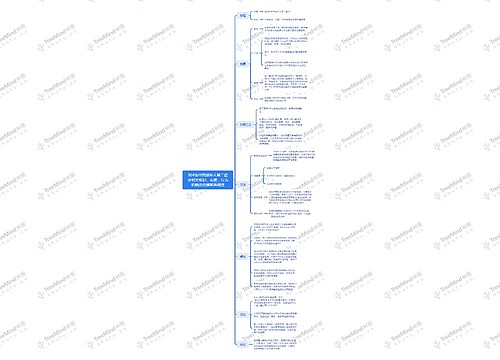
9.战斗的基督教思维导图
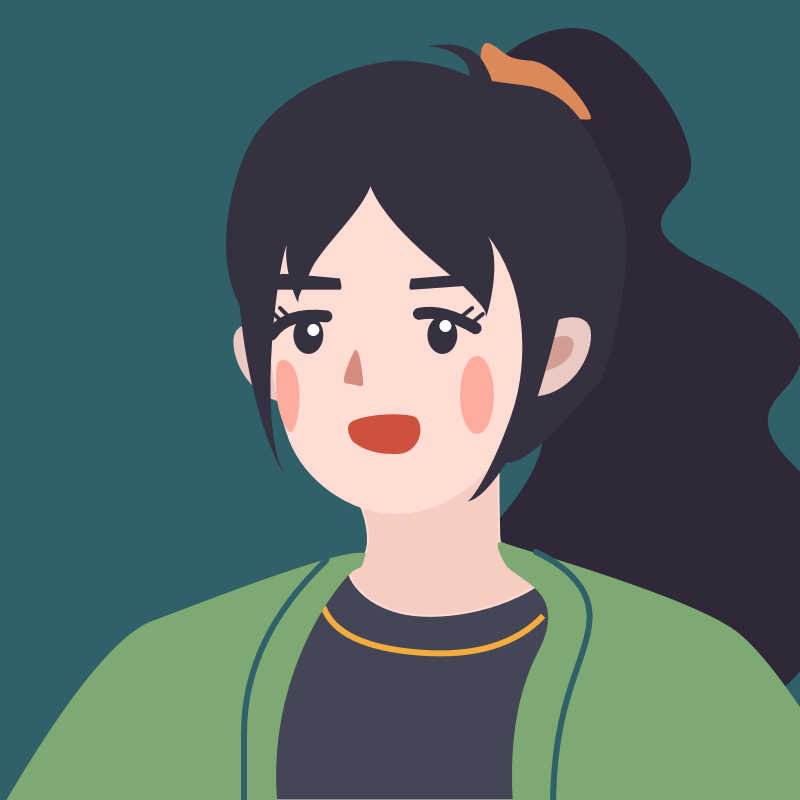 U582679646
U582679646树图思维导图提供《9.战斗的基督教》在线思维导图免费制作,点击“编辑”按钮,可对《9.战斗的基督教》进行在线思维导图编辑,本思维导图属于思维导图模板主题,文件编号是:33d168acd0cd9f767f809c7a5df86e3a
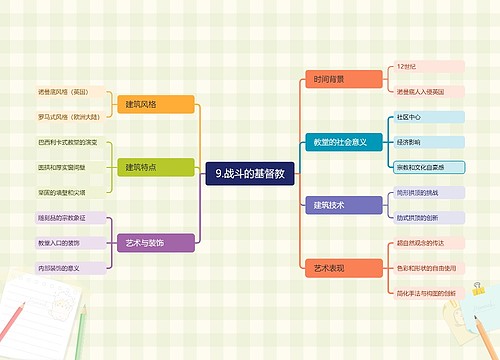
相似思维导图模版
首页
我的文件
我的团队
个人中心

